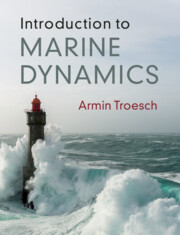Refine search
Actions for selected content:
5487 results in Thermal-fluids engineering
11 - Applications of Micro/Nanoscale Thermal Radiation
-
- Book:
- Thermal Radiation
- Published online:
- 31 October 2024
- Print publication:
- 14 November 2024, pp 363-420
-
- Chapter
- Export citation
Preface
-
- Book:
- Thermal Radiation
- Published online:
- 31 October 2024
- Print publication:
- 14 November 2024, pp ix-x
-
- Chapter
- Export citation
3 - Numerical Methods for Solving the Radiative Transfer Equation
-
- Book:
- Thermal Radiation
- Published online:
- 31 October 2024
- Print publication:
- 14 November 2024, pp 54-79
-
- Chapter
- Export citation
6 - An Overview of Micro/Nanoscale Thermal Radiation
-
- Book:
- Thermal Radiation
- Published online:
- 31 October 2024
- Print publication:
- 14 November 2024, pp 119-136
-
- Chapter
- Export citation
2 - Radiative Transfer Equation
-
- Book:
- Thermal Radiation
- Published online:
- 31 October 2024
- Print publication:
- 14 November 2024, pp 31-53
-
- Chapter
- Export citation
1 - Fundamentals of Thermal Radiation
-
- Book:
- Thermal Radiation
- Published online:
- 31 October 2024
- Print publication:
- 14 November 2024, pp 3-30
-
- Chapter
- Export citation
5 - Applications of Macroscale Thermal Radiation
-
- Book:
- Thermal Radiation
- Published online:
- 31 October 2024
- Print publication:
- 14 November 2024, pp 100-116
-
- Chapter
- Export citation
4 - Experimental Techniques for Macroscale Thermal Radiative Properties
-
- Book:
- Thermal Radiation
- Published online:
- 31 October 2024
- Print publication:
- 14 November 2024, pp 80-99
-
- Chapter
- Export citation

Introduction to Marine Dynamics
-
- Published online:
- 31 October 2024
- Print publication:
- 30 May 2024
-
- Textbook
- Export citation

Thermal Radiation
- From Macro to Nano
-
- Published online:
- 31 October 2024
- Print publication:
- 14 November 2024
References
-
- Book:
- Introduction to Marine Dynamics
- Published online:
- 31 October 2024
- Print publication:
- 30 May 2024, pp 288-294
-
- Chapter
- Export citation
Chapter 1 - Preliminaries
- from Part I - Frequency Domain Dynamics
-
- Book:
- Introduction to Marine Dynamics
- Published online:
- 31 October 2024
- Print publication:
- 30 May 2024, pp 3-20
-
- Chapter
- Export citation
Contents
-
- Book:
- Introduction to Marine Dynamics
- Published online:
- 31 October 2024
- Print publication:
- 30 May 2024, pp v-viii
-
- Chapter
- Export citation
Preface
-
- Book:
- Introduction to Marine Dynamics
- Published online:
- 31 October 2024
- Print publication:
- 30 May 2024, pp ix-x
-
- Chapter
- Export citation
Chapter 8 - Seakeeping
- from Part II - Stochastic Marine Dynamics
-
- Book:
- Introduction to Marine Dynamics
- Published online:
- 31 October 2024
- Print publication:
- 30 May 2024, pp 232-287
-
- Chapter
- Export citation
Copyright page
-
- Book:
- Introduction to Marine Dynamics
- Published online:
- 31 October 2024
- Print publication:
- 30 May 2024, pp iv-iv
-
- Chapter
- Export citation
Chapter 6 - Fourier Analysis
- from Part II - Stochastic Marine Dynamics
-
- Book:
- Introduction to Marine Dynamics
- Published online:
- 31 October 2024
- Print publication:
- 30 May 2024, pp 179-202
-
- Chapter
- Export citation
Chapter 3 - Wave Theory Based upon Ideal Fluids
- from Part I - Frequency Domain Dynamics
-
- Book:
- Introduction to Marine Dynamics
- Published online:
- 31 October 2024
- Print publication:
- 30 May 2024, pp 41-54
-
- Chapter
- Export citation
Index
-
- Book:
- Introduction to Marine Dynamics
- Published online:
- 31 October 2024
- Print publication:
- 30 May 2024, pp 295-297
-
- Chapter
- Export citation
Part II - Stochastic Marine Dynamics
-
- Book:
- Introduction to Marine Dynamics
- Published online:
- 31 October 2024
- Print publication:
- 30 May 2024, pp 177-287
-
- Chapter
- Export citation
